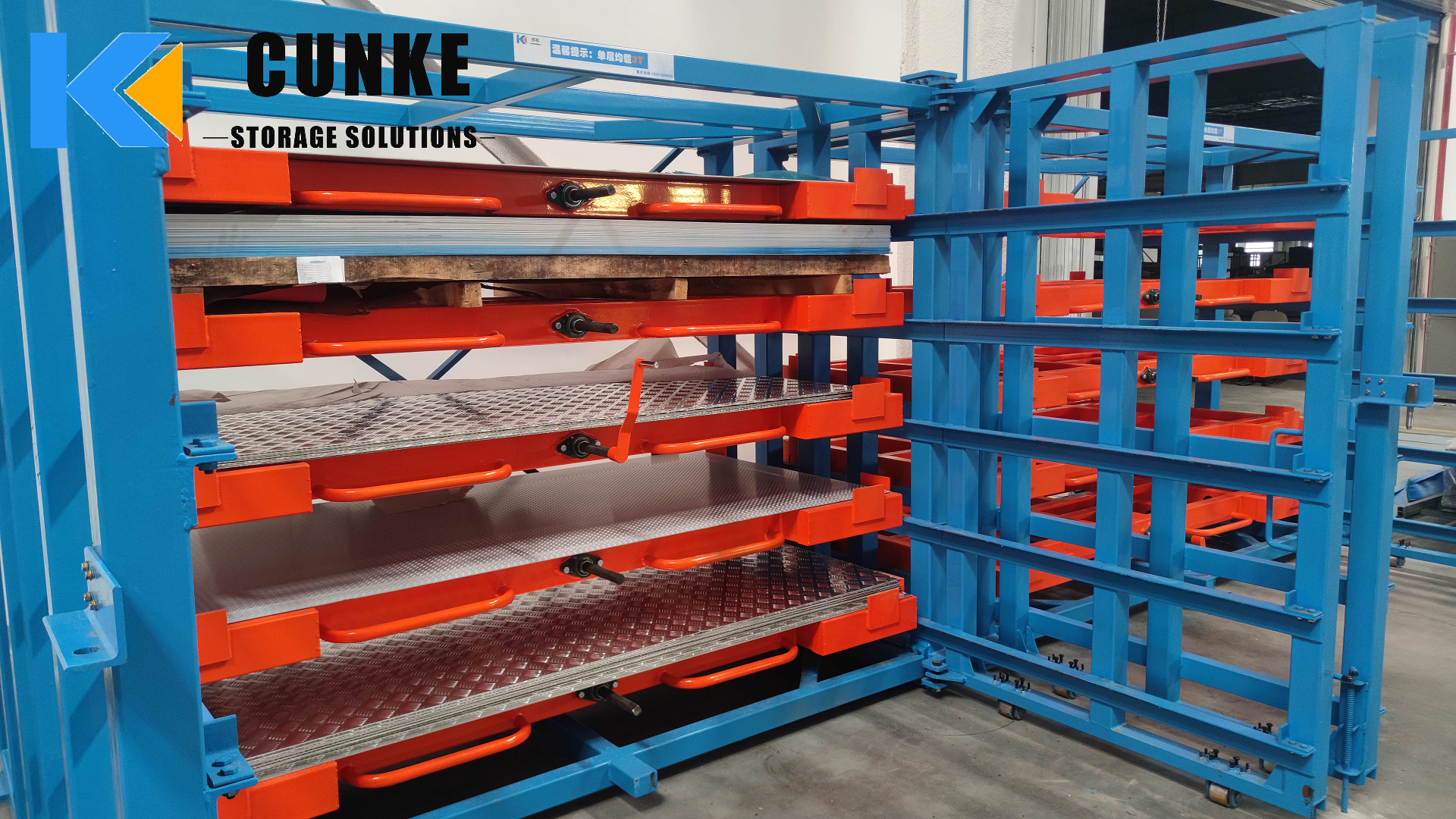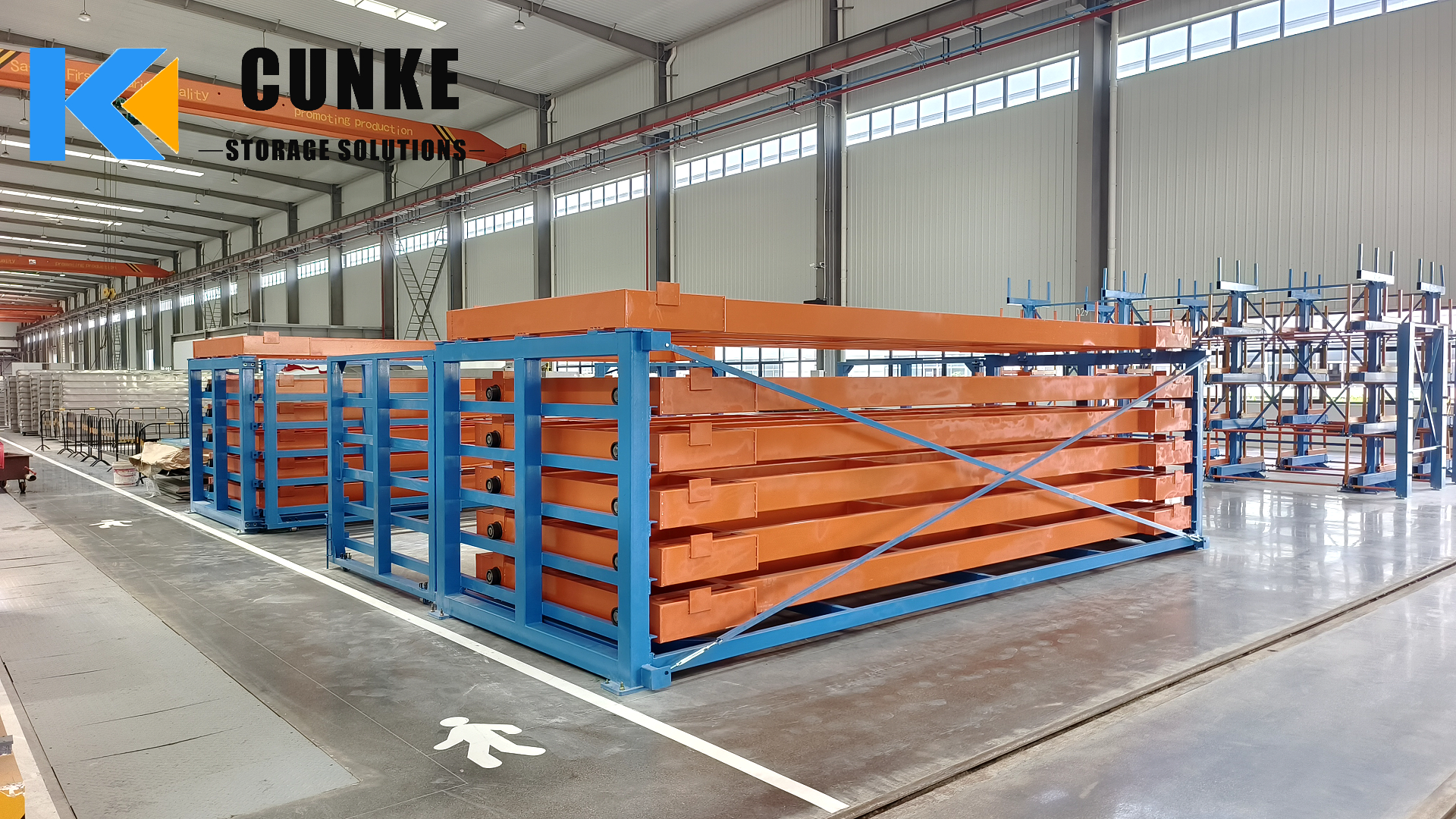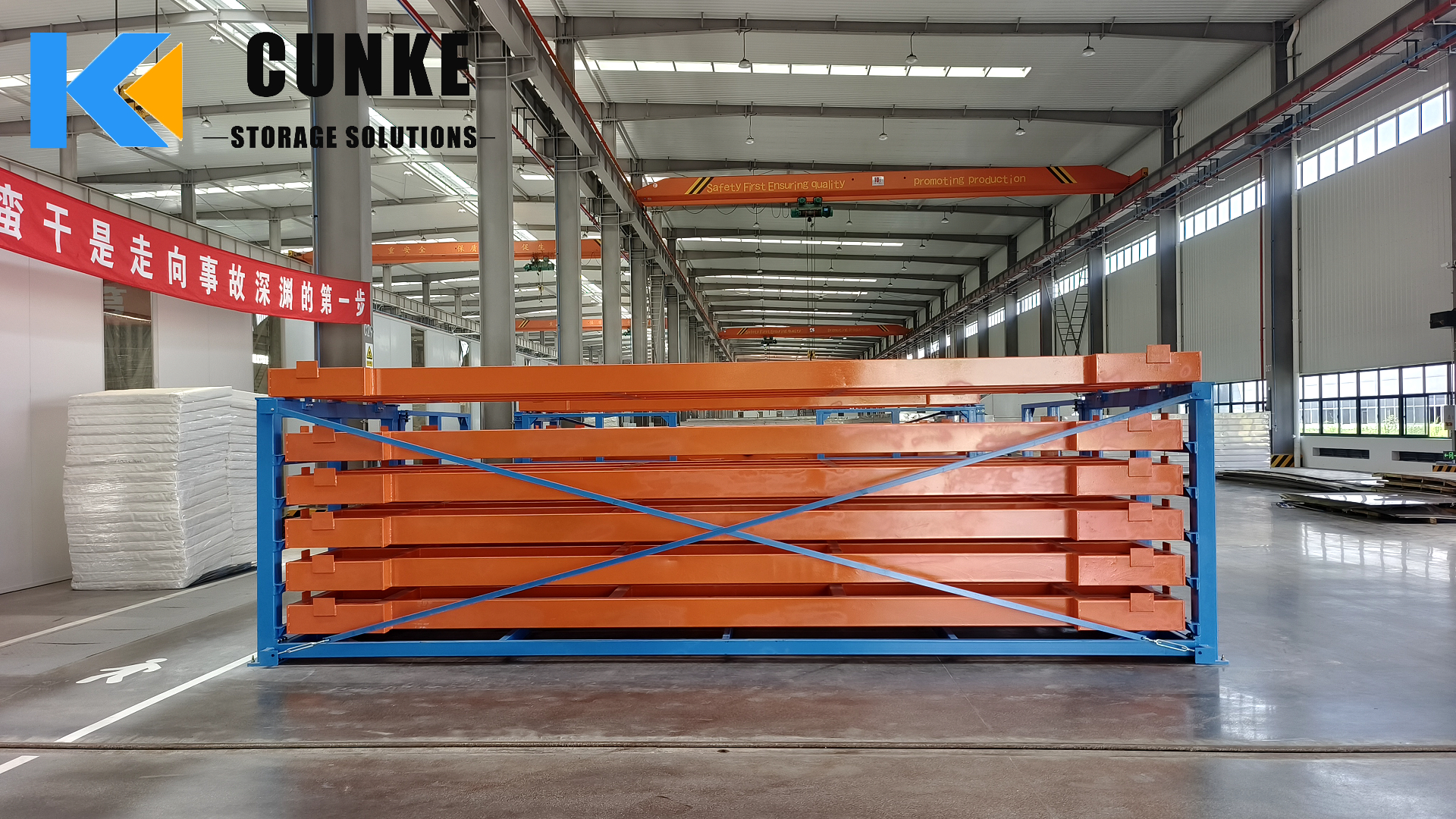Extending the lifespan of roll-out sheet metal racks not only saves maintenance and replacement costs for businesses but also ensures the safety and efficiency of storage operations. This article will delve into how to extend the lifespan of roll-out sheet metal racks from five aspects: material selection, daily maintenance, operating procedures, environmental management, and regular inspections and refurbishments.
Ⅰ. Material Selection and Design Optimization
Choosing the right materials and optimizing the design are fundamental to ensuring the long-term durability of roll-out sheet metal racks.
1.1 Material Selection
- Steel Selection: High-quality steel is the foundation for manufacturing roll-out sheet metal racks. It is generally recommended to use cold-rolled or hot-rolled steel, which has high strength and toughness. Depending on the storage environment, galvanized steel or powder-coated steel can be selected to enhance the rack’s corrosion resistance and rust prevention.
- Surface Treatment: Surface treatment plays a crucial role in improving durability. Common treatments include spraying, galvanizing, and phosphating, which effectively prevent rust, scratches, and other damages to the rack surface, thereby extending its lifespan.
- Component Material Selection: For key components like drawer slides and support beams, materials with high wear resistance and strength should be chosen. Ensuring compatibility with the main materials is important to prevent a reduction in lifespan due to inconsistent materials.
1.2 Structural Design Optimization
- Load-bearing Design: Ensure that the load-bearing capacity of each drawer meets actual usage requirements to avoid deformation or damage caused by overloading. The design should account for the heaviest materials and provide a safety margin.
- Anti-Tip Design: Strengthen the design and add counterbalance systems to prevent the rack from tipping during loading and operation, especially when a drawer is fully extended.
- Ventilation and Moisture-proof Design: Consider ventilation between racks during design to reduce moisture accumulation and prevent structural damage due to changes in humidity.

Ⅱ. Daily Maintenance and Care
Regular daily maintenance and care are essential for extending the lifespan of roll-out sheet metal racks.
2.1 Regular Cleaning
- Surface Cleaning: Regularly remove dust, oil, and other contaminants from the rack surface to prevent corrosion-causing substances from adhering to the surface for extended periods, which could lead to rust.
- Slide Maintenance: Lubricate drawer slides regularly using professional lubricants or grease to ensure smooth opening and closing, avoiding increased wear due to dry slides.
2.2 Rust Prevention
- Surface Rust Prevention: In high-humidity environments, regularly apply rust inhibitors to the rack surface to prevent rusting. For areas where rust spots have already appeared, sand them down and reapply anti-rust paint promptly.
- Repair and Refurbishment: If the rack surface shows signs of peeling or scratches, repair it immediately to prevent further corrosion. For older racks, regular refurbishment, such as repainting or replacing damaged components, can extend their lifespan.
2.3 Load Management
- Adhere to Load Limits: Strictly follow the designed load capacity when storing items, avoiding overloading. Overloading not only shortens the rack’s lifespan but may also lead to safety incidents.
- Even Weight Distribution: When storing materials, ensure the weight is evenly distributed to avoid tilting or damaging the rack due to uneven load distribution.

III. Operating Procedures and Staff Training
Proper operating procedures and staff training can significantly reduce rack damage caused by improper use.
3.1 Operating Procedures
- Drawer Operation: When operating drawers, it is recommended to pull out only one drawer at a time to avoid the rack becoming unstable and tipping over. Ensure the drawer opens and closes with moderate force to prevent damage to the slides due to excessive force.
- Loading and Unloading: When loading items, handle them with care to avoid heavy objects directly impacting the rack surface. When retrieving items, be mindful of the surrounding objects to avoid accidentally hitting the rack and causing structural damage.
3.2 Staff Training
- Operational Skill Training: Regularly provide skill training for operators to ensure they master the correct methods for operating the racks, understand the load capacity, and are aware of the usage limitations to prevent damage caused by improper operation.
- Safety Awareness Education: Improve operators’ safety awareness by emphasizing the importance of following operating procedures, thus avoiding rack damage or safety incidents due to haste or convenience.
3.3 Work Discipline and Supervision
- Establish Operating Standards: Develop and implement detailed rack usage standards and operating procedures, requiring all employees to strictly adhere to them.
- Supervision and Assessment: Establish a dedicated supervision mechanism to regularly inspect the rack usage, promptly identify and correct improper operations, and incorporate this into employee assessments to encourage compliance with the standards.

Ⅳ. Environmental Management and Protection
The storage environment significantly impacts the lifespan of roll-out sheet metal racks. Effective environmental management and protection measures can greatly extend the racks’ service life.
4.1 Environmental Control
- Humidity Control: In high-humidity environments, racks are prone to rust. It is recommended to use dehumidifying equipment to control the humidity in the storage area. Additionally, moisture-proof mats or racks made of moisture-resistant materials can be used.
- Temperature Control: Extreme temperature environments can affect the material properties of the racks. For example, low temperatures may make steel brittle, while high temperatures could cause material deformation. Therefore, ensure the storage environment maintains a suitable and stable temperature.
4.2 Dust and Pollution Prevention
- Dust Prevention: Regularly clean the storage area to prevent dust accumulation, which can damage the rack surface. Additionally, dust covers or enclosed rack designs can be used to reduce dust contamination.
- Chemical Corrosion Prevention: If there are chemicals in the storage area, ensure they do not come into contact with the racks to prevent corrosion. If unavoidable, consider using racks made of chemically resistant materials or take isolation measures.
4.3 Fire and Electrical Safety Measures
- Fire Safety: Install fire protection equipment, such as fire extinguishers and sprinkler systems, near the racks, and ensure that the rack materials have a certain level of fire resistance.
- Electrical Safety: If the rack system requires electrical devices, ensure the safety of the electrical equipment, regularly inspect the circuits, and prevent damage caused by electrical fires or equipment failures.

Ⅴ. Regular Inspections
Regular inspections can promptly identify and resolve potential issues, thereby extending the rack’s service life.
5.1 Regular Inspections
- Structural Inspection: Regularly check the overall structure of the racks, especially the connections and weld points, to ensure there are no loose, deformed, or cracked components.
- Slide Inspection: Focus on checking the condition of the drawer slides to ensure smooth operation, and replace them if severe wear is detected.
- Protective Device Inspection: Regularly inspect the protective devices on the racks, such as guardrails and anti-tip mechanisms, to ensure they are functioning properly and preventing safety incidents.

Ⅵ. Summary
Extending the lifespan of roll-out sheet metal racks requires a comprehensive approach involving material selection, daily maintenance, operating procedures, environmental management, and regular inspections. By adhering to scientific design principles, following proper operating guidelines, and implementing strict maintenance and environmental management practices, companies can ensure that rack systems remain efficient, safe, and durable throughout their lifecycle. Through continuous experience accumulation and improvement, companies can enhance the lifespan of their racks, thereby creating greater economic benefits.
